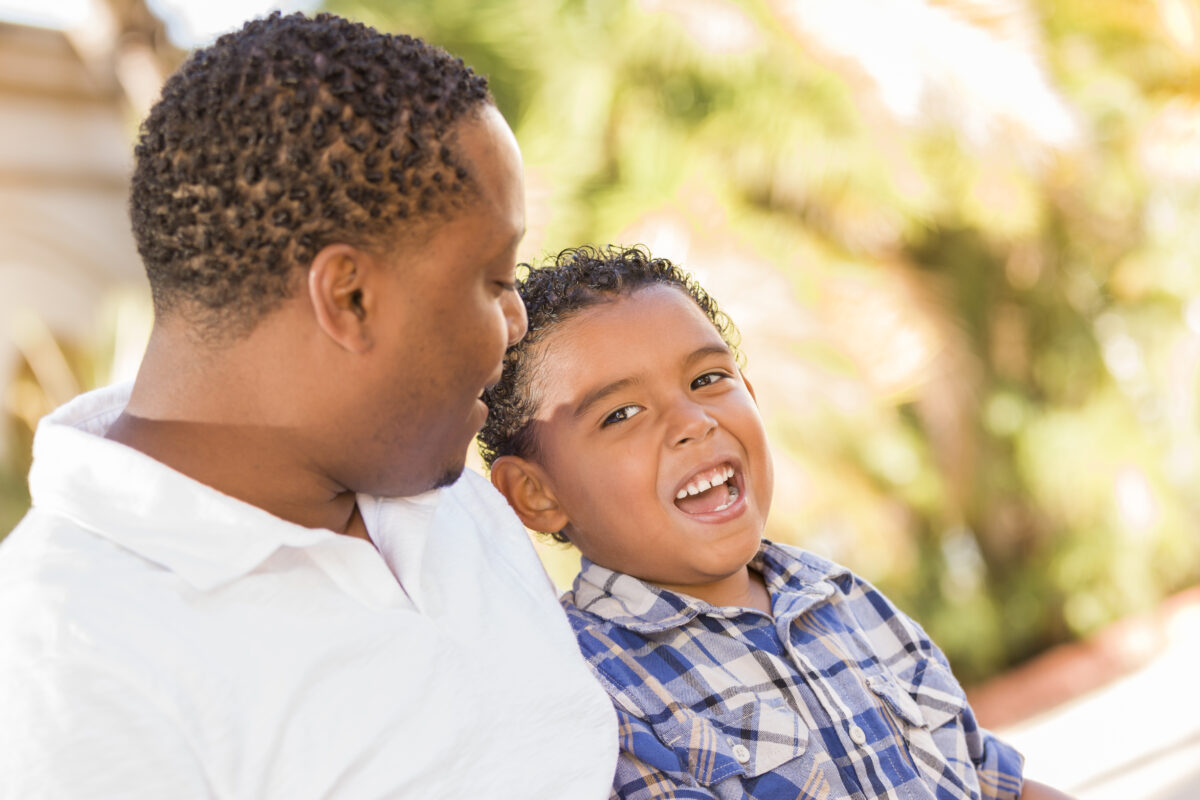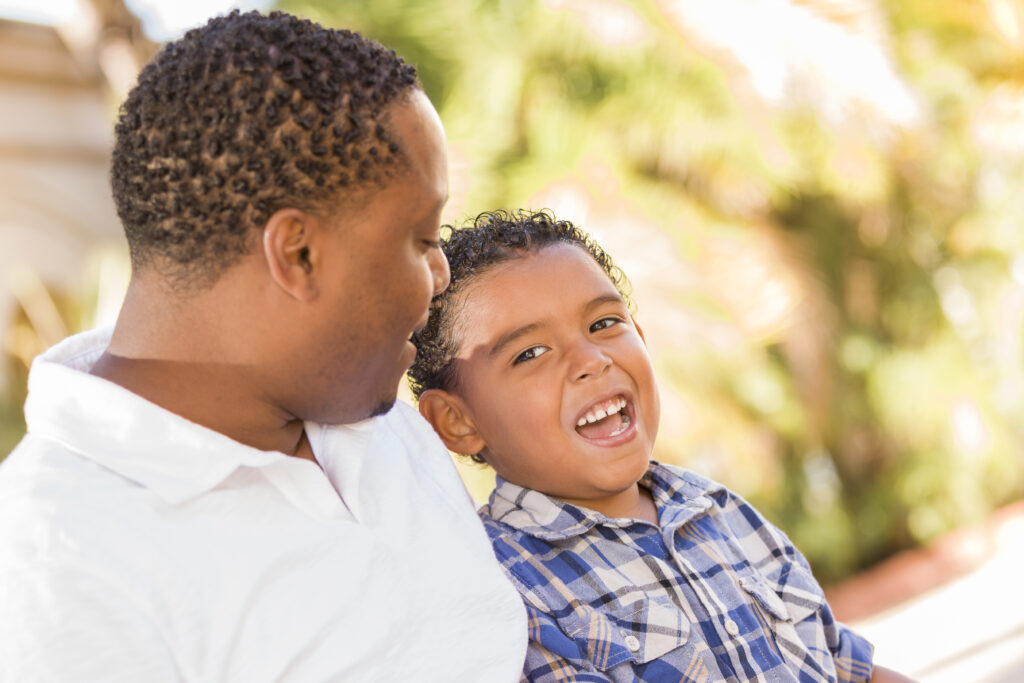Menu
My Anxiety, Your Anxiety: Handling Emotional Contagion
 I’ve recently found myself wondering: Is my anxiety making my child anxious? Or am I anxious because I have such an anxious child?
I’ve recently found myself wondering: Is my anxiety making my child anxious? Or am I anxious because I have such an anxious child?
This chicken-or-the-egg paradox is not easy to entertain. But establishing causality might not be as important as recognizing the emotional feedback loop that is typical of most parent-child relationships, particularly when emotions as “catchy” as anxiety are involved.
Emotions can be as contagious as the flu. Those of us who are more sensitive know this intuitively. This idea has been substantiated by scientific studies that pinpointed some of the brain mechanisms involved in “emotional contagion,” or the process where people subconsciously adopt the emotions and behaviors of others.
Turns out we’re wired to mimic other people’s nonverbal communication—such as facial expressions, gestures, and tone of voice—and this mimicking process allows us to mirror their emotions. Research has shown that when we observe another person’s actions or emotions, the neurons that get activated in our brain are the same ones that fire up when we perform that action or feel that emotion ourselves. These neurons, dubbed “mirror neurons,” are thought to play an important role in emotional contagion.
But despite what we know about the communicability of emotions, parents of children with anxiety disorders are very rarely reminded that they themselves are part of a complicated interactional equation and are often incentivized to approach their kids’ condition as the only problem that requires “fixing.”
In my discussions with pediatric specialists over the years, I was told anxiety disorders often co-occur with autism, ADHD, intellectual and learning disabilities, and other developmental conditions. But frequently missing from the discussion were two important facts. One was that 30 percent of adults experience an anxiety disorder at some point in their lives. And the other was that, as the mother of a child with special needs, I would be even more likely to experience an anxiety disorder myself.
What also went unsaid was that, in a family ecosystem, it’s hard to fix one person’s problem without addressing another’s. Which is to say that much of the time and effort I put into helping my anxious child would have been better spent if I had addressed my own excessive worries as well.
In fairness, some specialists make family therapy a central aspect of their practice and do a fantastic job at it. But until the emotionally contagious nature of anxiety in parent-child relationships is universally recognized and acknowledged, parents might find themselves in a circular chain of events, anxiously trying to help their anxious child and getting nowhere fast.
Even when parents aren’t diagnosed with an anxiety disorder, odds are they feel apprehensive about their special needs child’s differences, vulnerabilities, and in the case of medically fragile children, their health. And whether these fears and concerns are spoken out loud or not, the child subconsciously (or maybe consciously) picks up her parents’ feelings. Research on emotional contagion has shown what many of us already know: Even when people try to suppress their emotions, others can still sense them with the help of nonverbal cues such as micro-expressions, tone of voice, and posture.
It wasn’t until recently that I realized how the above dynamic was affecting my interactions with my special needs child. It all came to a head during one of my daughter’s exposure therapy sessions.
As is customary in this type of therapy, a psychologist devised a plan to gradually expose my child to the things she fears most in a protected environment, to make her incrementally more capable of managing her phobias. An example of an exposure therapy exercise would be having someone with arachnophobia handle a sealed glass jar with a small spider inside it. Another example might involve having someone with social anxiety make a speech in front of a large group.
This therapy session took place at my house, with the psychologist present. Without going into details, I can say that my daughter was visibly triggered by the exercise, and my role throughout the process was to calmly guide and support her. I tried to do so by cheering her on and saying things like “you’re safe,” “you can do this,” and a few other platitudes that came to mind. I thought I was doing a decent job, not realizing there was a disconnect between my words and nonverbal communication.
When my daughter left the living room to do an exposure exercise in our backyard the therapist looked at me and said, “You seem anxious right now. Do you want to talk about it before she returns?”
I didn’t expect my child’s therapist to flip the script. But what surprised me even more was the fact that I didn’t realize I was anxious, likely because my focus was on my daughter’s struggles at that moment. And that made me wonder, how often am I anxious and not realize it? How often am I trying to manage my daughter’s anxiety while simultaneously neglecting my own, in a classic case of the blind leading the blind?
Odds are, the answer is “often.” And come to think of it, how could I not?
Since my daughter’s complicated arrival into the world, I was told she would need the help of multiple therapies to thrive and keep up with peers. From her time in the NICU all the way to middle school, she has been followed by specialists and attended regular physical, occupational, and speech therapy. She has also received several educational accommodations for attentional, visual spatial, motor, and coordination challenges. In some ways, because of all the attention her developmental differences require, I’ve been conditioned to worry about her.
Ironically, as soon as she developed some self-awareness and started worrying about her ability to handle the world’s pressures, I felt as though my “job” was to provide her with constant reassurances that she “need not worry.” Little did I realize that those verbal reassurances might have caused even more confusion.
Given what we know about emotional contagion—and the fact that much of the transmission, interpretation, and assimilation of emotions happen at the subconscious level—my message to my daughter was at the very least contradictory. I found myself telling her that she should “be strong” and “not worry.” But my subconscious message was: “You are fragile, and I need to take extra care of you.”
This dynamic is not unusual among special needs parents and their children. It’s a situation with no simple fix and, admittedly, I’m right in the thick of it. But here’s what I’ve learned so far:
Self-awareness is key. You can’t help a person with an anxiety disorder if you can’t recognize the physical and emotional manifestations of anxiety within yourself. Unfortunately, many parents have gotten used to an underlying feeling of anxiety and associate that emotional state with just what “it’s like to be a parent.” Try not to brush these worrisome feelings aside: Stop, pay attention to what’s going on within you, and label your emotions. Once you become more self-aware, you’ll be in a better position to manage your anxiety and help your child with hers.
Develop coping strategies. Part of your game plan might involve simply pausing and taking a deep breath, then recognizing and labeling your feelings. Some people find that it helps to have a “conversation” with their anxiety, along the lines of: “Hey friend. I see you’re here again trying to protect me from life’s unforeseen dangers. I’m okay now and I can handle this situation without you. Buh-bye.” You don’t have to be so literal in your approach—find what works for you.
Model your coping strategies to your child in real-time. If anxiety hits you when your child is nearby, try describing to her what’s happening to you, including your emotional and physical sensations. Then tell her how you’re handling your tricky emotions: “Now, I’m taking very deep, slow breaths so I can feel calmer.” When you are transparent in your vulnerability, you allow your child to know that it’s okay to feel anxious or afraid. And by sharing your coping strategies, you’re showing her that anxiety can be managed. Since you’re the one struggling at that moment, your child will be more receptive to learning than during her own crisis situations.
When your child is anxious, try to co-regulate with her. This is a key part of the process given the contagiousness of emotions. Respond to your child’s anxiety with as much awareness and calmness as you can muster. Stop what you’re doing and give her your entire focus. You can try several different techniques: Hold your child’s hands—you can both be standing or sitting down facing each other—and encourage her to slow down her breathing. As her breathing decelerates, try to synchronize your breaths. Another option, if you’re indoors, is to go outside for some fresh air and a quick walk. But if going outside isn’t an option, try walking together in circles in your own living room until your kid’s emotions stabilize. A third, simple technique, is simply going into a relaxing yoga pose (such as child’s pose) together.
After you co-regulate, help your child identify the emotions she was feeling—then validate them. It takes emotional intelligence to effectively identify and manage your own emotions. And developing emotional intelligence starts with observing how you feel and paying attention to how you behave. Once your child starts getting better at pinning down her feelings, make sure she understands that it’s okay to feel the so-called “negative” emotions, including anxiety. The point is not to judge or repress these feelings but to acknowledge and learn how to regulate them.
Try using some of your coping strategies to help your child—or help her create one of her own. If you like “talking” with your anxiety, teach your kid how to do it. Ditto for anything else that you find helpful. After the situation settles down and your child is calmer, brainstorm and explore solutions together. Did the coping strategy you tried work well? Are there other things you could do next time anxiety strikes? Let your child feel like an active participant in the management of her anxiety—not a helpless receiver of your help.
Think of it as a lifelong process. Uncomfortable feelings are part of the human experience. Anxiety has an important function—it can help us be aware and act in the face of problems—and it’s bound to pop up occasionally, sometimes for good reasons. But every so often there’s a disconnect between your perceived level of threat and your situation. The more you and your child practice recognizing your emotions, the better you’ll become at noticing overreactions.
Anxiety management is a lifelong process, and I’m walking this windy path with my child right now. Sometimes it feels like we’re stuck in the same place, gazing at repetitive vistas. But I know we’re accumulating small victories and learning new things along the way. One victory I’m looking forward to is when she develops a coping strategy of her own. Another will be when she catches me needing to calm down and offers to co-regulate. When that happens, I’ll know we have it made.






